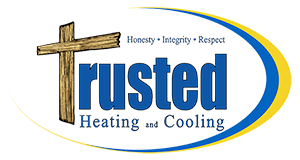Living in Austin, TX, means dealing with hot temperatures for a large part of the year. Many homeowners notice that their energy bills can skyrocket during particularly warm months, often wondering if there’s a way to keep their homes comfortable without overspending. One key factor that significantly affects your cooling costs is insulation. While it may not be the first thing you think about when trying to reduce your energy bills, insulation plays a critical role in how efficiently your air conditioning system works. In this blog, we’ll explore the relationship between insulation and cooling costs, helping you understand why investing in proper insulation can be one of the smartest choices for your home.
Understanding the Role of Insulation in Your Home
Insulation is essentially a barrier that slows down the movement of heat. During hot months in Austin, your goal is to keep warm air out and cool air in. Insulation works by reducing the transfer of heat between the inside of your home and the outside environment. The better your insulation, the less your air conditioner has to work to maintain a comfortable temperature.
Homes without adequate insulation or with damaged insulation face constant heat gain from the outside. This not only makes your home feel warmer but also forces your air conditioning system to run longer and work harder, directly impacting your cooling bill. According to the U.S. Department of Energy, homeowners can save up to 15% on heating and cooling costs by properly insulating their homes—a figure that holds true for cooling in warm climates like Austin.
How Heat Gains Occur in Austin Homes
Before diving deeper into insulation types and strategies, it’s important to understand how heat enters your home. Heat gain occurs through several pathways:
-
Roof and Attic: The roof is one of the primary points of heat transfer. Sunlight can cause roof surfaces to become extremely hot, which then radiates heat into the attic. Without proper insulation in the attic, that heat can easily make its way into your living spaces.
-
Walls: Exterior walls can absorb heat from sunlight. Homes with poor insulation in the walls allow this heat to seep indoors.
-
Windows and Doors: While insulation primarily focuses on walls, ceilings, and floors, windows and doors can also contribute to heat gain if they are not properly sealed or insulated.
-
Floors and Ductwork: Heat can also travel through floors, especially if they sit above a non-air-conditioned space like a garage. Additionally, poorly insulated ductwork can allow cooled air to warm up before it reaches your living areas.
Understanding these heat pathways highlights why insulation is critical—not just in one area of your home, but throughout your entire structure.
Types of Insulation and Their Impact on Cooling Bills
Not all insulation is created equal. The type of insulation you choose can have a direct effect on your air conditioning efficiency and, ultimately, your cooling bills. Here’s a breakdown of common insulation types:
Fiberglass Insulation
Fiberglass is one of the most widely used insulation materials in residential homes. It comes in batts or loose-fill forms and works by trapping pockets of air that slow the transfer of heat. Fiberglass is effective in attics and wall cavities and can significantly reduce cooling costs when installed correctly. Homes with fiberglass insulation have been shown to maintain cooler indoor temperatures more consistently, reducing the strain on air conditioning units.
Spray Foam Insulation
Spray foam insulation is known for its high R-value per inch, meaning it offers excellent resistance to heat transfer. It expands to fill gaps and cracks, creating an airtight seal. For Austin homeowners, this type of insulation can dramatically reduce cooling bills by preventing warm air from infiltrating the home and cooled air from escaping. Spray foam is particularly effective for sealing hard-to-reach spaces and improving overall energy efficiency.
Cellulose Insulation
Cellulose insulation is made from recycled paper products treated for fire resistance. It’s commonly blown into wall cavities or attics and provides excellent thermal performance. Cellulose is effective at slowing heat gain and maintaining a more stable indoor temperature, which means your air conditioning system doesn’t have to work as hard.
Reflective or Radiant Barrier Insulation
Reflective insulation, often used in attics, works by reflecting radiant heat away from the home. In hot climates like Austin, radiant barriers can prevent the attic from absorbing excessive heat from the sun, reducing the cooling load on your air conditioner. Studies have shown that radiant barriers can reduce attic temperatures by as much as 30 degrees Fahrenheit, which translates into noticeable energy savings.
Signs Your Home May Need Better Insulation
Even if your home has insulation, it may not be performing as well as it should. Here are some indicators that your insulation may need an upgrade:
-
High Energy Bills: If your cooling bills are consistently high despite regular AC maintenance, poor insulation could be a factor.
-
Uneven Temperatures: Rooms that are significantly hotter than others may indicate insufficient insulation in certain areas.
-
Drafts or Hot Spots: Feeling drafts or hot spots near windows, doors, or walls suggests heat infiltration.
-
Aging Insulation: Insulation materials can degrade over time, losing their effectiveness. If your home is older, your insulation may need replacement.
Addressing these issues can help you improve energy efficiency and lower cooling costs.
Benefits of Proper Insulation Beyond Lower Bills
Investing in insulation does more than just reduce your cooling bills. It also provides several additional benefits:
-
Enhanced Comfort: Proper insulation helps maintain a consistent indoor temperature, so you can enjoy a cooler home during hot Texas days.
-
Reduced AC Wear and Tear: When your air conditioner doesn’t have to work as hard, it experiences less strain, potentially extending its lifespan.
-
Noise Reduction: Insulation can also act as a sound barrier, reducing noise from outside and creating a more peaceful indoor environment.
-
Environmental Impact: By lowering energy consumption, proper insulation reduces your carbon footprint, contributing to a more sustainable home.
These benefits make insulation a smart long-term investment, especially for homeowners in regions with high cooling demands like Austin.
Tips for Maximizing Insulation Efficiency
Installing insulation is just the first step. To get the most benefit, homeowners should also focus on maximizing insulation efficiency. Here are some practical tips:
Seal Air Leaks
Even the best insulation won’t be effective if air can freely escape through cracks and gaps. Make sure windows, doors, and ductwork are properly sealed to prevent cool air from escaping and hot air from entering.
Ensure Proper Ventilation
While insulation keeps heat out, ventilation ensures that your attic or roof space doesn’t trap excessive heat. Proper ventilation, combined with insulation, creates a balanced system that improves comfort and efficiency.
Upgrade Aging Insulation
If your insulation is old or deteriorated, consider upgrading to modern materials like spray foam or high-performance fiberglass. New insulation materials often have higher R-values and better thermal performance.
Conduct an Energy Audit
An energy audit can identify areas where your home is losing energy, including poorly insulated areas. Professional HVAC services in Austin often provide energy audits, helping homeowners make informed decisions about insulation upgrades.
Common Myths About Insulation and Cooling
Many homeowners have misconceptions about insulation and its impact on cooling bills. Let’s address a few common myths:
-
Myth 1: More insulation always equals lower bills.
While adding insulation can help, it’s important to focus on quality and proper installation. Excessive insulation without addressing air leaks or ventilation may not provide significant savings. -
Myth 2: Insulation is only for winter.
Insulation is equally important for keeping homes cool in the summer. It slows the transfer of heat from outside, reducing the need for constant air conditioning. -
Myth 3: All insulation materials perform the same.
Different materials have varying R-values and applications. Choosing the right type of insulation for your home is key to maximizing efficiency.
Understanding the facts ensures homeowners make informed decisions and avoid unnecessary expenses.
How Insulation Works With Your Air Conditioning System
The efficiency of your air conditioner is directly linked to your home’s insulation. When insulation is adequate, your AC can maintain your desired temperature without running constantly. This not only lowers energy bills but also prevents the system from overworking, which can lead to breakdowns and costly repairs.
In Austin, where temperatures often reach high levels, an air conditioner without proper insulation is like trying to fill a leaky bucket. Cool air escapes, warm air infiltrates, and your system struggles to keep up. Proper insulation, combined with a well-maintained AC system, ensures your home stays comfortable while keeping energy consumption under control.
Investing in Professional Insulation and HVAC Services
While DIY insulation projects are possible, professional installation ensures the job is done correctly and efficiently. Trusted Heating and Cooling in Austin provides expert insulation and HVAC services, helping homeowners identify weak spots in their homes, choose the right insulation materials, and optimize their AC systems.
Professionals can also provide advice on duct sealing, attic ventilation, and energy-saving strategies, creating a comprehensive approach to reducing cooling costs. By investing in professional services, you’re not just improving comfort—you’re making a long-term investment in your home’s energy efficiency.
For AC Services in Austin, TX, Contact Trusted Heating and Cooling Today
Proper insulation is one of the most effective ways to reduce your cooling bills in Austin, TX. It slows heat gain, improves your air conditioning efficiency, and keeps your home comfortable even on the hottest days. Whether you’re considering insulation upgrades, duct sealing, or a complete energy audit, Trusted Heating and Cooling has the expertise to help.
Our team of professionals is dedicated to providing high-quality HVAC and insulation services tailored to your home’s needs. Contact Trusted Heating and Cooling today to start optimizing your home’s energy efficiency and enjoy the benefits of lower cooling bills and a more comfortable living space.

